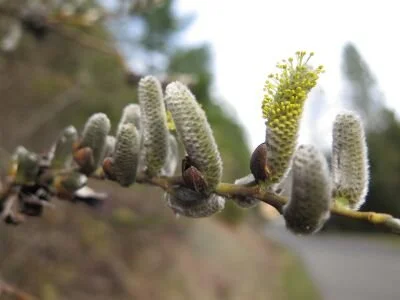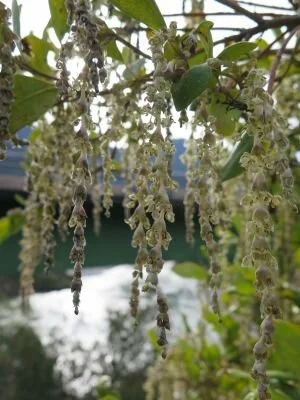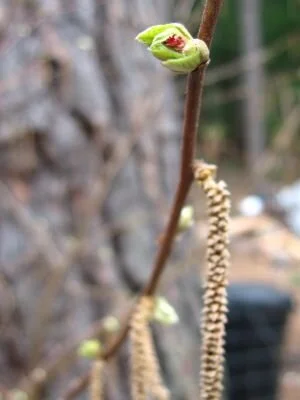Curiosity and the Catkin
by Tanya Chapple
catkins ready for dispersal from a willow
catkins on Garrya fremontii, common name silktassel
photographed at the Klamath Salmon confluence
I wanted to write this blog about pollination. Usually, when I think of pollination my mind immediately visualizes bees and butterflies, maybe a hummingbird or a bat if I get excited. But when I started thinking about pollination in early March there weren’t many pollinators to see. What became very apparent, however, were the blooms of alder, hazel and willow… Wind Pollination!
a female blossom and male catkin on a hazel plant
Many plants use wind to disperse their pollen, notably conifers and grasses. Trees and shrubs with pendulous, green or brown flowers, like alder, hazel and willow, oaks, silktassle, maple, and ash also reproduce via wind pollination. These trees and shrubs show good examples of catkin or catkin-like inflorescences. A catkin is a flowering structure, designed to distribute (or receive) pollen on the wind. Often only the male flowers form catkins, while the female flower will take another shape, as we see in hazel or oak.
The catkin appears to be an example of convergent evolution; this reproductive mechanism evolved at least twice, once for the order Fagales (oaks, hazel, alder) and again for Salicaceae (willow, cottonwood).
Wind pollination will only be successful if there is space for the air to pick up and move the pollen. Most of the trees forming catkins do so before they form their leaves, thus having more space for air movement. Conifers spread their pollen across the top of the forest canopy and grasses spread their pollen across the meadow or range. Understory plants are almost never wind pollinated as there isn’t enough space for this to be successful; these plants rely on the help of those bees, butterflies, occasional hummingbird or bat to pollinate their flowers.
Great information about insect pollinators can be found at the Xerces Society website: www.xerces.org
Tanya Chapple directs MKWC's invasive plant initiatives, and also co-directs native plant restoration efforts at the organization. She has resided in the Middle Klamath since 2008, and developed a profound understanding of the backcountry and astoundingly diverse plant life in these mountains.



